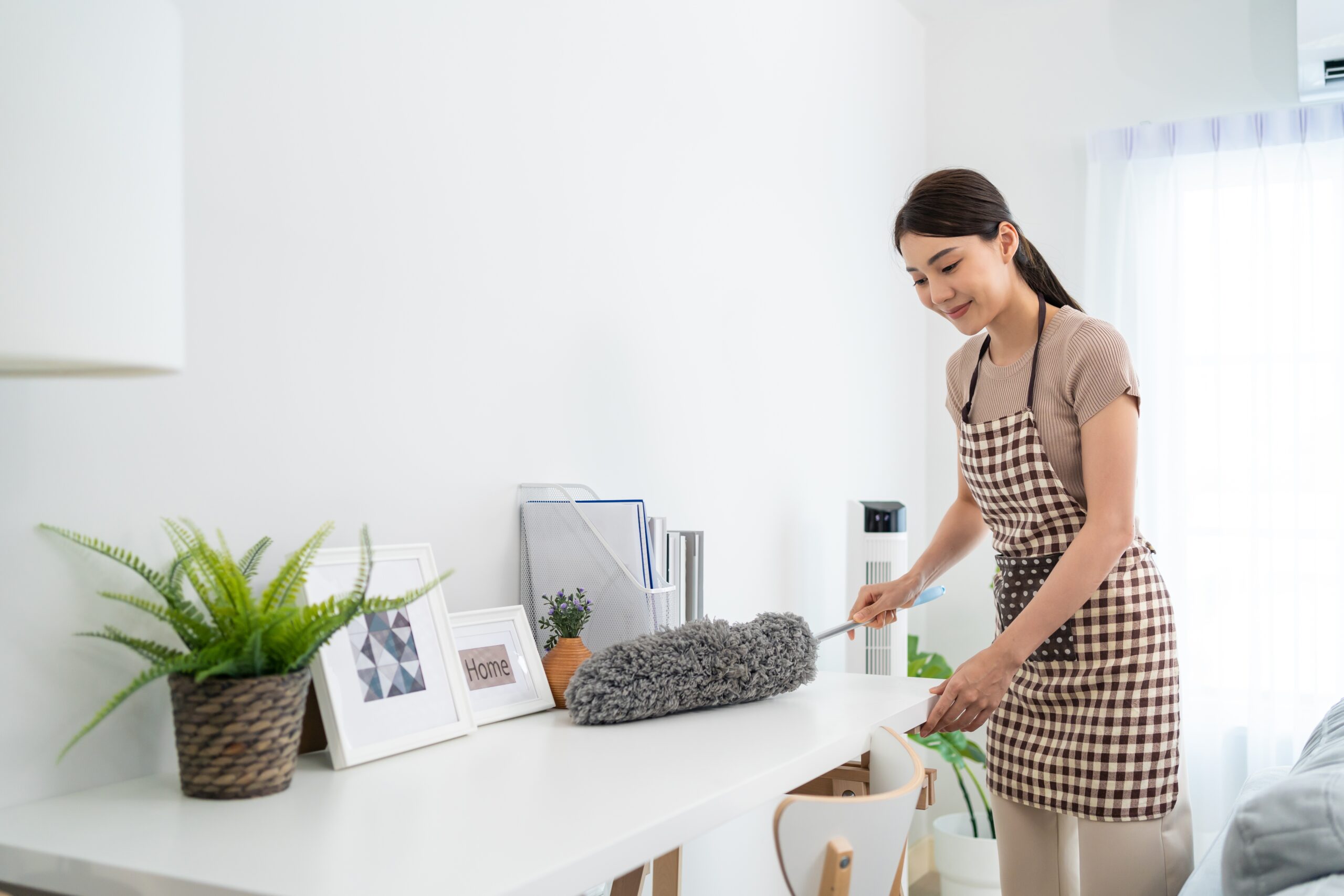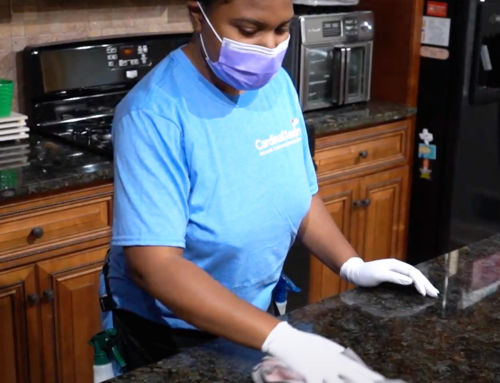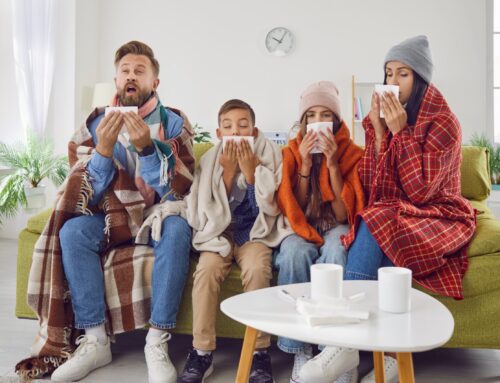Dust, an inevitable part of our daily lives, can accumulate in our homes and transform into unsightly dust bunnies if not managed properly. These dust bunnies not only detract from the aesthetic appeal of our living spaces but also pose potential health risks. In this comprehensive guide, we will explore the art of dusting, providing you with step-by-step techniques, recommended tools, and proactive measures to conquer dust bunnies and maintain a clean, allergen-friendly home.
Understanding Dust and Dust Bunnies
What is dust?
Dust is composed of various particles, including dead skin cells, hair, fabric fibers, pollen, pet dander, and tiny airborne debris. These particles settle on surfaces throughout our homes, gradually forming dust layers.
What are dust bunnies?
Dust bunnies are clumps of dust that accumulate in corners, under furniture, and other hard-to-reach areas. They are formed when dust particles combine with pet hair, lint, and other debris.
The Importance of Regular Dusting
Regular dusting plays a crucial role in maintaining a clean and healthy living environment. Here are some reasons why you should prioritize dusting:
Health implications
Dust can contain allergens, such as dust mites and pollen, which can trigger allergies and respiratory issues. By removing dust regularly, you can reduce the presence of these allergens in your home and improve indoor air quality.
Improved air quality
Dusting helps remove airborne particles, improving the overall air quality in your home. This is especially important for individuals with allergies, asthma, or other respiratory conditions.
Step-by-Step Guide to Effective Dusting Techniques
Follow these step-by-step techniques to achieve efficient and thorough dusting:
Preparing the area
Before you start dusting, remove any clutter from the area to ensure unrestricted access to surfaces. Clear off items from tables, shelves, and countertops.
Dusting from top to bottom
Start dusting from higher surfaces, such as ceilings, ceiling fans, and light fixtures, and work your way down to lower surfaces. This prevents dust from resettling on already cleaned areas.
Choosing the right tools
Selecting the right tools can make a significant difference in your dusting efforts. Consider the following options:
- Microfiber cloths: These soft and absorbent cloths attract and trap dust effectively without scratching surfaces.
- Feather dusters: Feather dusters are ideal for delicate items and light dusting.
- Electrostatic dusters: These dusters use static electricity to attract and hold dust particles.
- Vacuum cleaners with dusting attachments: Vacuums with brush attachments or dusting brushes are useful for cleaning upholstery, curtains, and other soft surfaces.
- Compressed air dusters: These canned air products blow away dust from hard-to-reach areas, such as electronics and keyboards.
Dusting hard surfaces
For hard surfaces like furniture, countertops, and shelves, use a microfiber cloth or electrostatic duster. Start at one end and work your way across, making sure to cover all sides and edges.
Dusting soft surfaces
For upholstered furniture, curtains, and carpets, use a vacuum cleaner with appropriate attachments. Use smooth and slow motions to allow the vacuum to effectively extract dust and debris.
Paying attention to hidden areas
Don’t forget to dust hard-to-reach and often overlooked areas, such as baseboards, window sills, behind appliances, and underneath furniture. Use a microfiber cloth or a vacuum cleaner attachment for these areas.
Recommended Tools for Efficient Dusting
To achieve optimal results while dusting, consider using the following tools:
Microfiber cloths
Microfiber cloths are highly effective in capturing and holding onto dust particles. They are reusable and can be washed easily.
Feather dusters
Feather dusters are gentle on delicate surfaces and can be used for light dusting. However, they may not trap dust as effectively as microfiber cloths.
Electrostatic dusters
Electrostatic dusters are designed to attract and hold dust particles through static electricity. They are particularly useful for dusting blinds, electronics, and other static-prone surfaces.
Vacuum cleaners with dusting attachments
Vacuum cleaners equipped with brush attachments or dusting brushes are versatile tools for dusting both hard and soft surfaces. They can effectively remove dust from upholstery, curtains, and other fabric-based items.
Compressed air dusters
Compressed air dusters blow powerful bursts of air to dislodge dust from hard-to-reach areas. They are especially useful for cleaning electronics, keyboards, and vents.
Proactive Measures to Reduce Dust Accumulation
While regular dusting is essential, adopting proactive measures can help minimize dust accumulation in your home. Consider the following strategies:
Regular vacuuming
Vacuuming your floors, rugs, and carpets at least once a week can significantly reduce the amount of dust in your home. Use a vacuum cleaner with a HEPA filter for optimal dust removal.
Controlling humidity levels
Maintain an optimal humidity level in your home, ideally between 30% and 50%. High humidity can lead to increased dust mite activity, while low humidity can cause airborne dust particles to remain suspended.
Washing bedding and soft furnishings regularly
Wash your bedding, pillowcases, curtains, and other fabric-based items regularly to remove dust and allergens. Follow manufacturer instructions for cleaning recommendations.
Using doormats and shoe racks
Place doormats at entryways and encourage family members and guests to wipe their shoes thoroughly. Utilize shoe racks or cubbies to prevent dirt and dust from being tracked into your home.
Minimizing clutter
Reduce clutter in your home, as it provides additional surfaces for dust to accumulate. Regularly declutter and organize your belongings to make dusting more efficient.
Changing HVAC filters
Regularly replace or clean the filters in your heating, ventilation, and air conditioning (HVAC) system. This helps prevent the circulation of dust and allergens throughout your home.
Creating an Allergen-Friendly Home
In addition to regular dusting, consider these measures to create an allergen-friendly home environment:
Identifying and addressing allergens
Identify common allergens in your home, such as dust mites, pollen, pet dander, and mold. Take appropriate steps to reduce their presence, such as using allergy-proof bedding covers or implementing pet grooming routines.
Implementing a regular cleaning schedule
Establish a consistent cleaning routine to stay on top of dust and allergens. Set aside specific times for dusting, vacuuming, and other cleaning tasks to ensure a clean and healthy living environment.
Utilizing air purifiers and filters
Invest in high-quality air purifiers with HEPA filters to remove airborne particles, including dust and allergens. Place them strategically throughout your home for maximum effectiveness.
Maintaining proper ventilation
Ensure proper ventilation in your home by opening windows regularly to allow fresh air to circulate. This helps reduce stale indoor air and flushes out accumulated dust.
In Conclusion…
Dusting your home regularly is an essential part of maintaining a clean and healthy living environment. By following the step-by-step techniques outlined in this comprehensive guide, using the recommended tools, and adopting proactive measures, you can conquer dust bunnies and enjoy a dust-free, allergen-friendly home. Remember, consistent effort and attention to detail will yield the best results.





